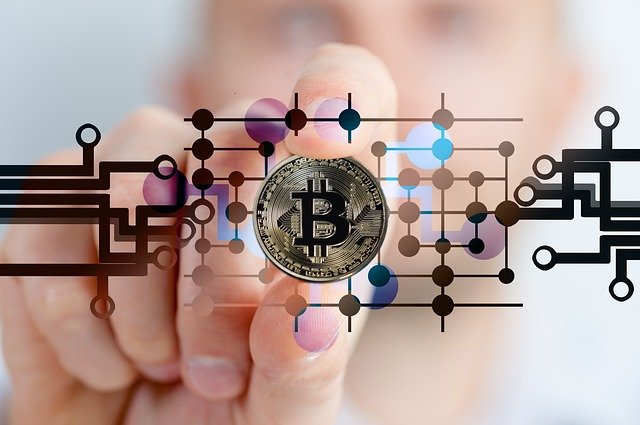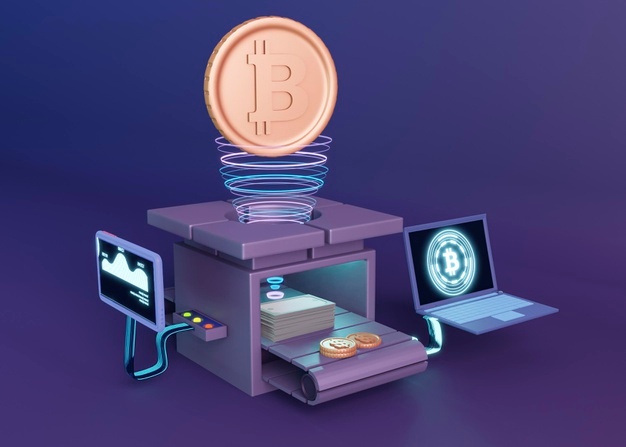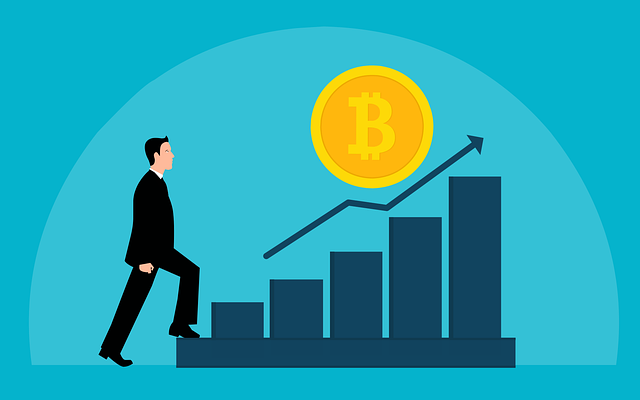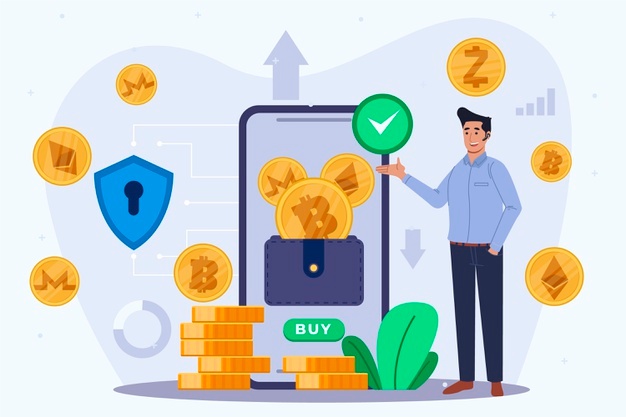Beginnings and Evolution of Cryptocurrency
Introduction
Cryptocurrency.
The word itself, now, has the potential to grab all our attention.
And, why not?
Well, 2021 has given a new direction to the unknown fate of cryptocurrency. For instance, look at some of these stats:
- Bitcoin market capitalization grew to $1072.21 billion as of February 21st, 2021.
- The global blockchain market is now expected to go reach more than $23.3 billion by 2023.
- In Q1 of 2021, the highest number of global daily bitcoin transactions is 367,536.
- Bitcoin has gained 193,639.36% between 2012 and 2020.
So on and so forth….
When we talk about cryptocurrency there is one name that stands out and that is “Bitcoin.” While most people associate the terms cryptocurrency and Bitcoin as one, it’s really not! In fact, the concept of cryptocurrency started way before Bitcoin was introduced.
Hope I have your attention by now because from here things are going to get very interesting.
Contents
How and when did crypto (Cryptocurrency) originate?
The revolutionary idea of a digital currency was discussed in early as 1980-90 by a group named ‘cypherpunks’. The group would meet every month to discuss new ideas and developments.
Around the same time, David Chaum, an American cryptographer, invented DigiCash, the first internet currency, in the Netherlands. It eventually garnered the attention of Microsoft, who wanted to buy the currency but the deal never materialized.
In 1998, Wei Dai used a cryptographic system in hope of developing a new payment method. He even published a proposal for B-Money. Despite his efficient and practical methods, the currency never developed fully.
So, what suddenly triggered the popularity of cryptocurrency?
To understand that let’s take a hypothetical situation:
Suppose, I give you a million dollars in cash, what would you do with it?
The two most reasonable answer is that you’ll either store it or spend it. Either way, you wouldn’t want to have so much cash on you.
So, what do you do?

You’ll simply keep it in your bank account for storing or spending it later.
But, the point to note here is what banks do with your money once it’s deposited?
Well, banks usually invest all your money by offering loans to people in need.
Now there is always a chance that these loans into a bad investment. What happens then?
If the banks lose your money, you’ll start losing your trust in the bank and so does other people like you. And if the story sounds familiar, well that’s what happened in “The Financial Crisis of 2008.”
Now, you might be wondering why are we reading about the Financial Crisis instead of the origin of Cryptocurrency.
The answer is simple, the Crisis brought forwards the shortcomings of the banking ecosystem and other similar institutions.
Similarly, when the government spends money earned in taxes for development. Now, what if their expenditure exceeds their income?
Most of the Governments deal with it by asking the central banks to print more money. This makes more money available to the public.
While this solved a problem for the Government, it reduces the value of money already in circulation.
But, how does it affect you?
Let take an example, consider that you have $1 out of $100 in circulation in the market which means that you own 1% of the total money in the country.
Now, if Government suddenly decides to print more money and add another $100. Now the total money in circulation goes up to $200, meaning that you now own only 0.5% of the entire market. That’s a fifty percent depreciation in the value of the money you saved.
These two reasons were enough for common people to start looking for a new system without the shortcomings of regular currencies.
Humble Beginning of Bitcoin

After the Financial Crisis, in 2009, Satoshi Nakamoto, a mysterious entity with a pseudo name, published the Bitcoin (BTC) whitepaper.
The document proposed a “peer-to-peer version of electronic cash” to “allow online payments to be sent directly from one party to another without going through a financial institution.”
The identity of Satoshi is unknown to this day. Satoshi could be a person or a group of developers. Satoshi not only published the Bitcoin whitepaper but also created the software around its blockchain before disappearing in 2010.
How does Bitcoin solve this problem?

We all know that the governments control the currencies in all the countries. Bitcoin takes that power and gives it back to the public.
It does this by fixing the number of coins that could ever be in circulation and its rate of production. Bitcoin’s code used in its design ensures that the maximum number and production rate cannot go beyond the set limit. Also, this code is transparent for everyone for easy verification.
This way, the value of Bitcoin will depend only on the market and will remain free from all Government interventions.
Now, we are dependent on a third-party vendor to validate a transaction whenever we make a transaction from our stored money. However, after the Financial Crisis of 2008, there is no guarantee that the vendor won’t make a risky investment with our money.
To solve this problem, Bitcoin allows users to directly transact with one another by eliminating any intermediaries.
How?
Well, you can simply need to create a Bitcoin Wallet for yourself to store your Bitcoins. This wallet will act less like a bank and more like your physical wallet.
Although maintained by various companies, unlike traditional banks, the wallet cannot take its own decisions. This is because the codes in their design are transparent and accessible to everyone to assure people that their deposits are safe.
Now that you know, how cryptocurrency originated and why Bitcoin came into existence. Let’s understand more about its value proposition and how it works in real life.
Why does Bitcoin have value and what are its uses?

Bitcoin is a chain of blocks built on top of a blockchain. Data is added in these blocks and over time new blocks are built atop of previous ones.
Transactions records are stored on nodes that are essentially multiple powerful devices across the world. The way a block cannot be altered without altering all the subsequent blocks.
Bitcoin boasts itself as having a decentralized ledger, meaning that there is no one person or organization looking after the network.
In the whitepaper, Satoshi Nakamoto wrote, “The network timestamps transactions by hashing them into an ongoing chain of hash-based proof-of-work, forming a record that cannot be changed without redoing the proof-of-work. The longest chain not only serves as proof of the sequence of events witnessed but proof that it came from the largest pool of CPU power.”
This is what makes Bitcoin almost attack-proof. In Bitcoin blockchain, if the majority of computational power, which is about 51 percent or more, is controlled by nodes that do not intent to corrupt the network. The chain grows and outpaces attackers. This makes Bitcoin a secure platform for the transaction.
Furthermore, the Bitcoin network’s code has a predictable upper limit and issuance rate. This means that the total number of coins can never exceed 21 million.
Its limited supply is seen to create a store of value against inflation, which is quite similar to gold.
How does the Bitcoin network work?
To understand that, let’s take a look at this example to compare regular and Bitcoin transactions.
Now, consider a person, John who wants to spend $1,000 on his friend Emma. John initiated the transaction by notifying his bank.
What happens next?

Bank, now, verifies if John, who wants to initiate a transaction, has the necessary funds.
Once done, the bank balance of John is reduced by $1,000, and Emma’s balance is increased by the same amount.
Note that, in this example, we have assumed that both of them have accounts in the same bank.
Unlike the conventional method, the transfer of Bitcoin follows a different path. Let’s see how:
Here, a bank is replaced by nodes of a particular blockchain that is involved in the transaction due to its decentralized design.
Now, in this case, if John wants to send one Bitcoin to Emma, they must notify the network so that all the nodes can know.
To hash transactions and other information in the block, the nodes solve a puzzle given by the protocol referred to as mining.
Mining is a task performed by miners who must keep hashing slightly modified data each time until a solution is found. Once found, a Bitcoin token can be sent to Emma.
A new block is created once a solution for the successful transfer of Bitcoin is found. In return, the miner receives a block reward (in Bitcoin).
Once the transaction is added, all nodes in the Bitcoin blockchain can see and validate it, and update it in the ledger to reflect it.
Once the transaction is completed, John’s crypto wallet is updated which will show one Bitcoin sent, while Emma’s wallet will show one Bitcoin received.


China's tech giants pledge to ban NFTs, cryptocurrency marketplace | TRO
[…] secondary marketplaces. According to the signed agreement by Chinese internet and tech titans, cryptocurrency and digital collectibles (NFTs) will be banned and secondary marketplaces will not be […]